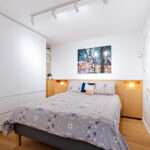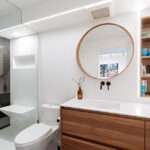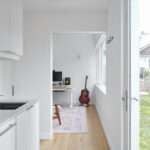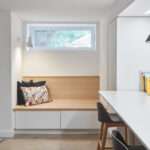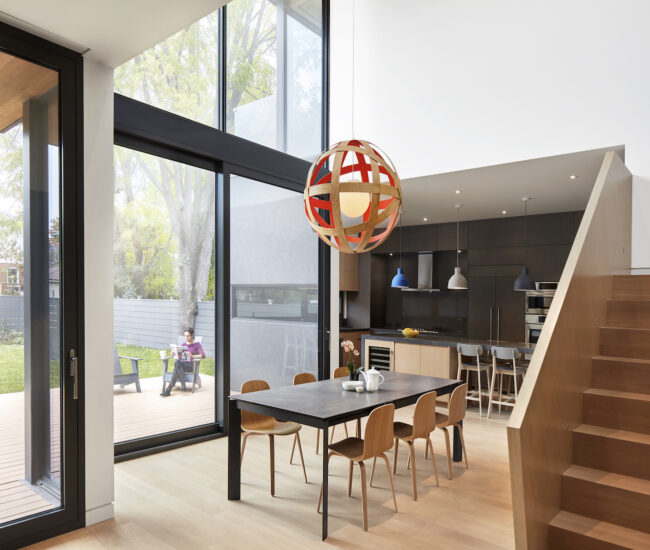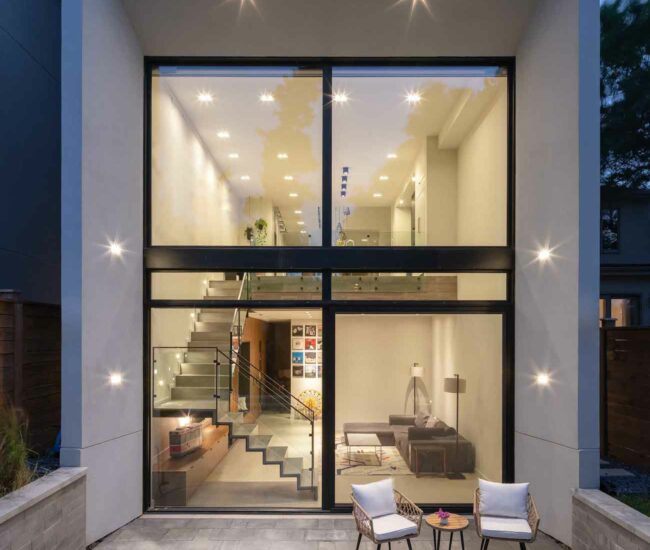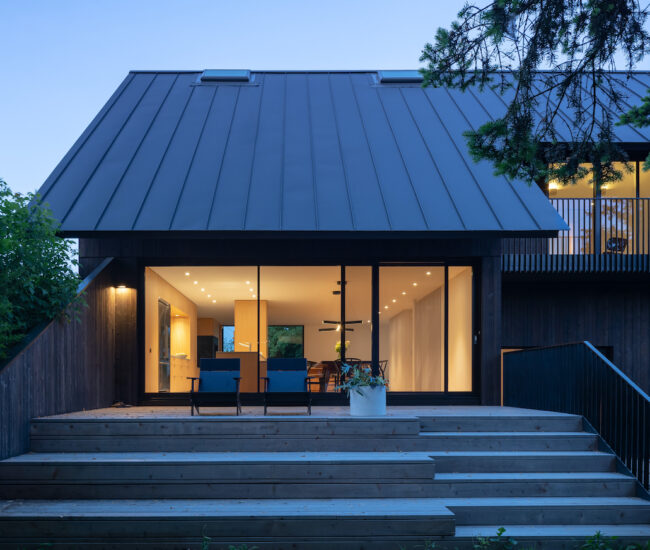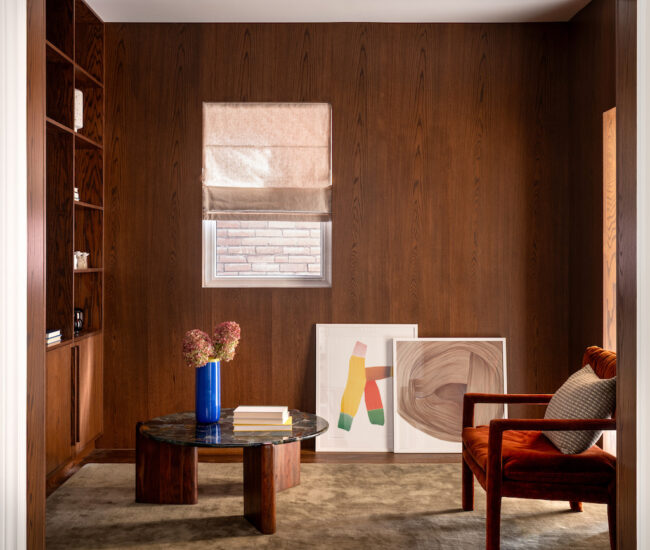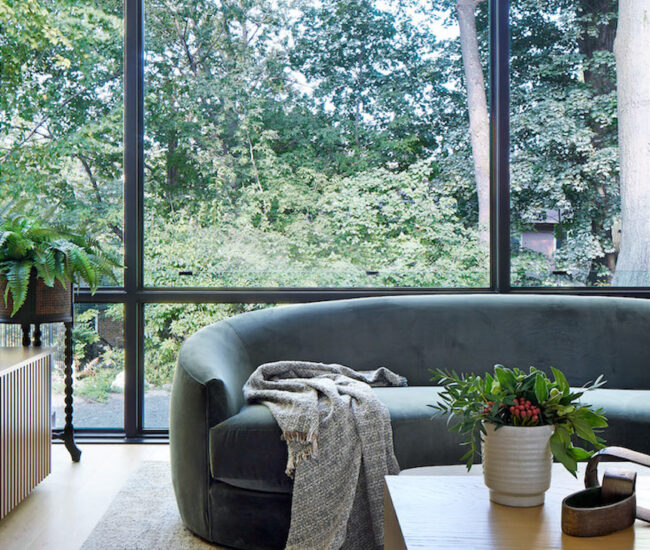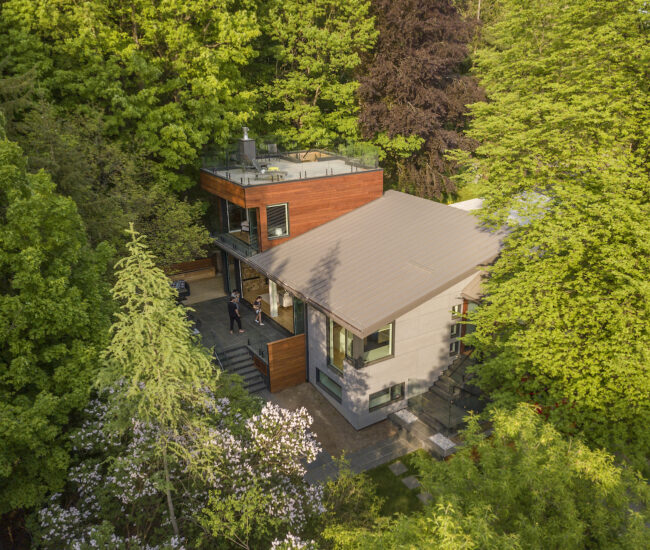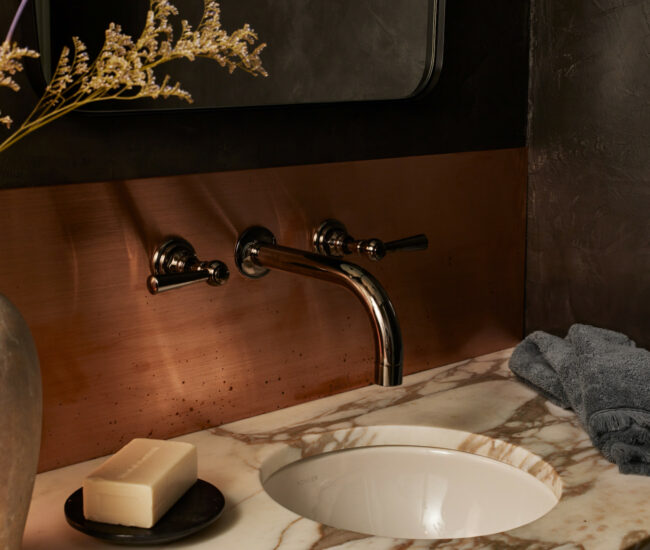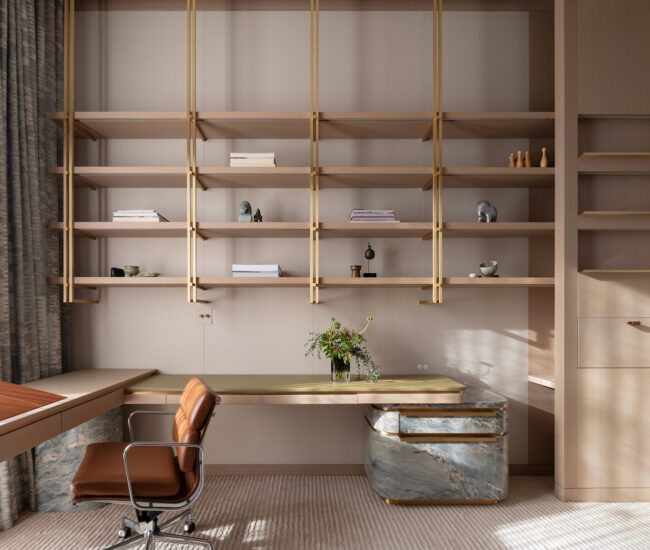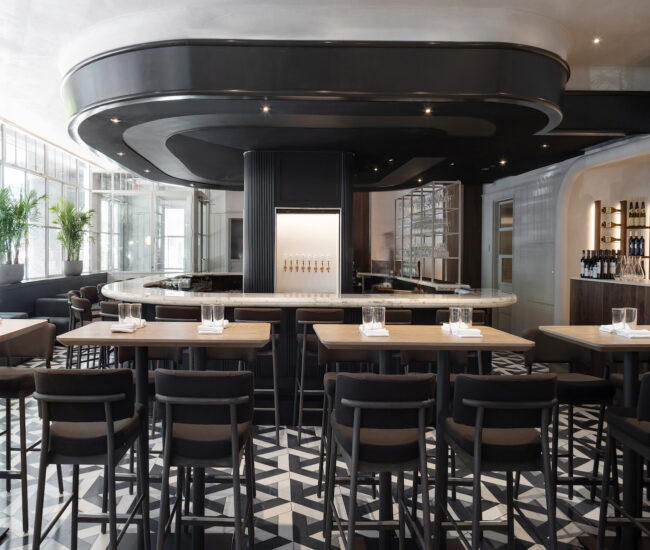Creative Union Network Makes Small Spaces Feel Grand
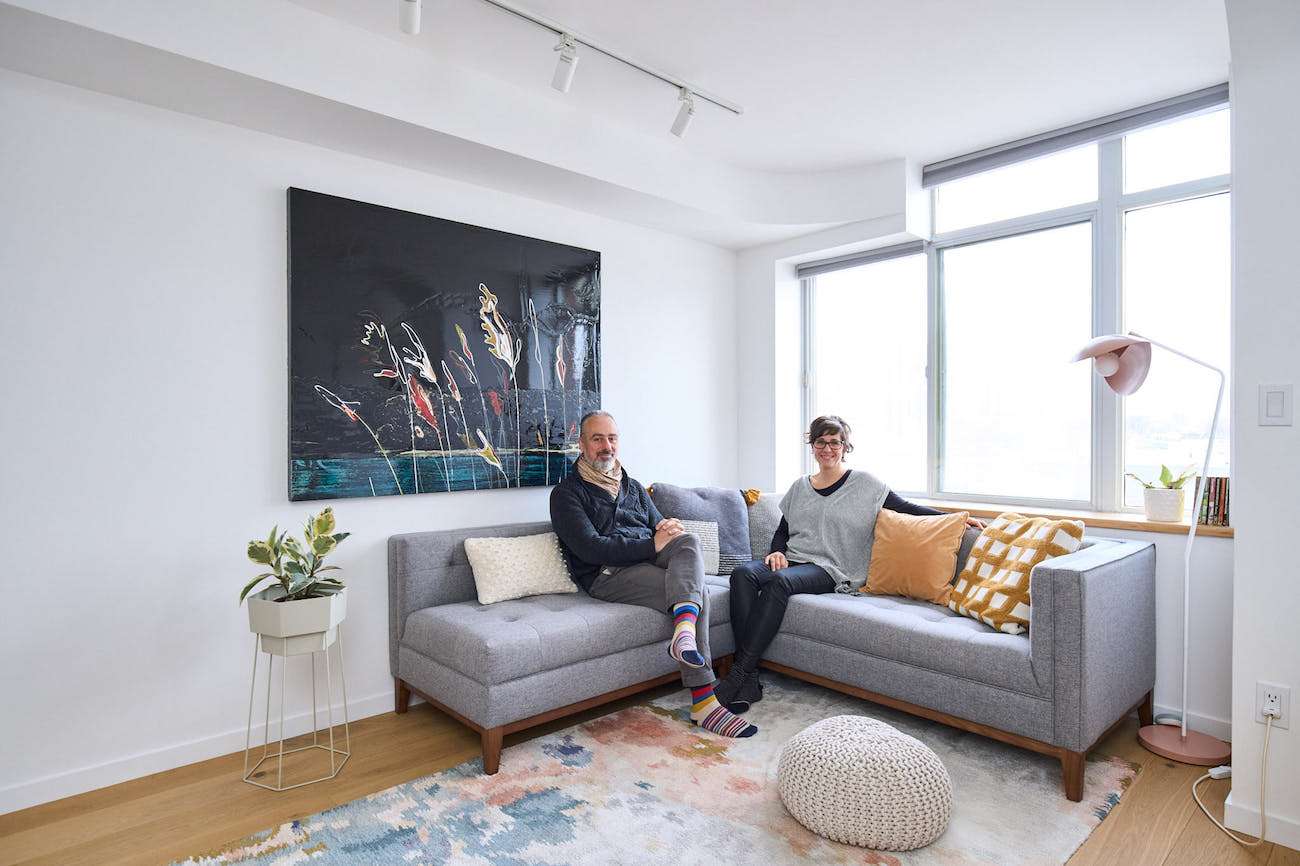
Across three projects in Toronto, Claudia Bader and Timothy Mitanidis made every square foot count
Creative Union Network, the boutique firm started in 2012 by husband-and-wife duo Claudia Bader and Timothy Mitanidis, is known for making small spaces seem big. The work is often colourful and quirky, but for the partners architecture isn’t only—or even mainly—about accents or finishes. It’s about having a strategic approach to space. “We refine each layout to its essence,” says Mitanidis, “because an ill-conceived layout can cost a lot of square footage.” How do they make their designs so rigorously efficient? Here are three guiding principles, beautifully exemplified in these recent projects.

Turning Obstacles into Accents
When Bader began drawing a renovation for a 560-square-foot condo in the Distillery District, the existing layout — a rectangle bisected lengthwise into separate zones — made little sense. Or rather, it made sense only from a developer’s perspective: if you run a wall through your main area, then (ta da!) one room becomes two, increasing resale value. But the rooms themselves were narrow and awful.

Bader’s chief priority was getting rid of the partition, creating a single kitchen-dining-living area, along with a den-like bedroom tucked near the condo entrance. But when workers demolished the main wall, they found a conduit chase running through it from the unit below to the one above. “We talked to the condo board,” says Bader. “They wouldn’t let us relocate that wire.”
She needed yet another pragmatic solution, like the water pipe she’d routed through the headboard of the custom bed or the steam unit she’d hidden behind a wood panel in the foyer. Ultimately, she ran the errant wire underneath the floor, then up through a pillar near the window, which also contains the furnace. At the top, the pillar now curves outward, allowing the wire to reach the unit above at its predetermined spot. With its sculpted form, the pillar complements the curvilinear bulkheads encircling the room: it is a practical solution disguised as an playful flourish. “We couldn’t get rid of the problem,” says Bader. “So, we turned it into a feature.”

Working around Building Codes
At the beginning of the pandemic, a couple, while expecting a second child and learning to work from home, hired Creative Union Network to enlarge their small Weston-area abode. None of the conventional solutions appealed. An addition? Only if they could spare the necessary time and money to win over the committee of adjustments. A laneway suite? Not without a laneway. A garden suite? The relevant bylaws hadn’t gone into effect.
But what about a backyard building that — because it lacks living amenities and takes up only 10 percent of the lot — doesn’t technically qualify as a garden suite at all? The couple would be limited to a strict 350 square feet, but special permits wouldn’t be necessary.

“We maximized layout by minimizing circulation space,” Mitanidis explains. You enter the garden studio via a kitchenette at the centre, which doubles as a foyer. There’s a bathroom behind it and offices at either end, each with hardwood flooring and unobtrusive sliding doors. There’s also a storage unit to the side of the building, accessed via exterior doors that swing out and therefore don’t consume precious floorspace.
Ultimately, the entire structure amounts to little more than a work area — albeit an elegant one — but it nevertheless frees up domestic space in the main house. And it comes with a bonus: “Throughout the construction process,” Mitanidis says, “the family lived at home.”
Choosing Essential Luxuries
When Creative Union Network signed on to redesign the kitchen, upstairs bathroom, and basement for a family of four, it had features they deemed superfluous, like a spacious subterranean bathroom and a hefty island inside a narrow kitchen. Of course, there’s nothing wrong with luxurious privies and countertops. If you own a mansion, you can have them all. But if you’re working with a mere 680 square feet—the combined area of Bader’s renovation—you’ve got to pick your perks.

Bader treated each zone as an optimization problem. Rather than enlarging the 33-square-foot upstairs bathroom to include a tub (there’s one in the basement already) she outfitted the space with Corian finishes and a discreet bifold shower door. In the basement, she shrunk the bathroom and moved it away from the window, thereby bringing light into the central area, which she outfitted with inset bookshelves, desks, and reading nooks. On the ground floor, she got rid of the island altogether, creating a galley kitchen, albeit one with plenty of shelves and countertops — and also room for people to move.
Bader likes this constraints-based approach to design. “Sometimes it’s nice to have limits,” she says, “because they guide your choices.” When you give up on having every conceivable luxury, you open yourself to the most important luxury of all — quality space. CREATIVE-UNION.NET

Originally published in Designlines 2023 Small Spaces issue.


